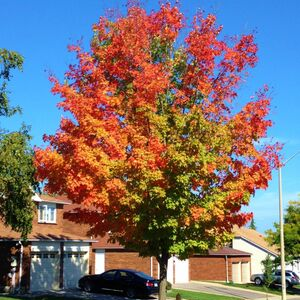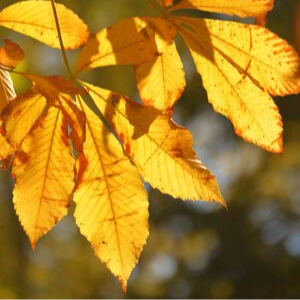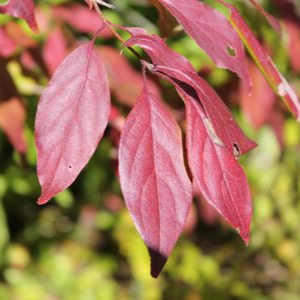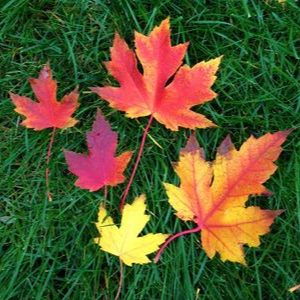
During the spring and summer months, leaves serve as food factories for trees. Leaves produce food by capturing the sun’s energy and combining it with a green pigment called chlorophyll, which gives leaves their green colour throughout the spring and summer. The leaves then use this energy to convert water and carbon dioxide into oxygen through a process called photosynthesis. But, in the fall, environmental cues, such as changes in the length of daylight and temperature, begin to slow down this process. As photosynthesis begins to decrease, 
As the green colour fades, underlying colour pigments are revealed. The fall colour of leaves is made up of the different proportions of these pigments. The yellow and orange pigments in leaves are known as carotenoids. Carotenoids are always present in leaves, but, because chlorophyll levels are very high during the spring and summer months, they are often concealed. Carotenoids help chlorophyll absorb light energy for use in photosynthesis during these months. But, in the fall, as the green disappears, the carotenoids start to show their real colours.

Some tree species further their colorization process by chemically producing a secondary pigment called anthocyanin, which are the reds, purples and even blue colours you see in the fall. Unlike carotenoids, anthocyanins are not automatically present in leaves but are created when chlorophyll is degraded. Additionally, anthocyanins require sunlight for production and thus are only primarily produced in exposed leaves. That said, the levels of anthocyanin pigments can fluctuate from year to year due to the influence of pH levels in the soil, soil moisture, sunlight and temperature. If warmer temperatures persist into the fall or if there is a severe drought, the change in fall colour as well as the intensity can be slowed down. 
Ultimately, the process of fall leaf colour change is very complex and there is no magic formula to predict exact fall colour. Trees are living beings and, because many factors can influence fall colour, there is no way to guarantee you will see the same thing year after year! The colours we do see, though, are a truly spectacular gift. And now, the next time you take a walk amongst the trees to take in their beauty, you’ll be able to appreciate the complex processes and elements that create those enchanting colours!
Natasha Keshavjee is the Residential Planting Programs Operations Supervisor at LEAF.
The Backyard Tree Planting Program is supported by the City of Toronto, the Regional Municipality of York, the City of Markham, the Town of Newmarket, the Town of Ajax, Toronto Hydro and Ontario Power Generation.
